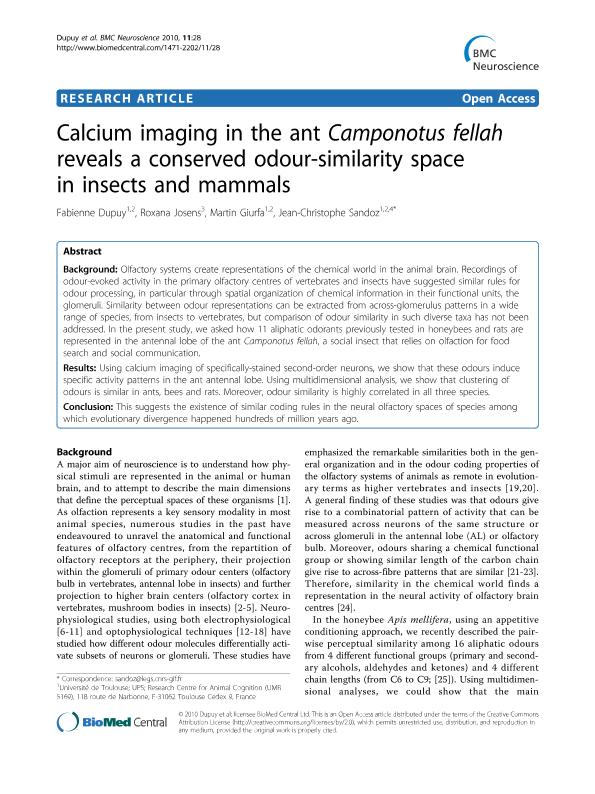Artículo
Calcium imaging in the ant Camponotus fellah reveals a conserved odour-similarity space in insects and mammals
Fecha de publicación:
02/2010
Editorial:
BioMed Central
Revista:
Bmc Neuroscience
ISSN:
1471-2202
Idioma:
Inglés
Tipo de recurso:
Artículo publicado
Clasificación temática:
Resumen
Background: Olfactory systems create representations of the chemical world in the animal brain. Recordings of odour-evoked activity in the primary olfactory centres of vertebrates and insects have suggested similar rules for odour processing, in particular through spatial organization of chemical information in their functional units, the glomeruli. Similarity between odour representations can be extracted from across-glomerulus patterns in a wide range of species, from insects to vertebrates, but comparison of odour similarity in such diverse taxa has not been addressed. In the present study, we asked how 11 aliphatic odorants previously tested in honeybees and rats are represented in the antennal lobe of the ant Camponotus fellah, a social insect that relies on olfaction for food search and social communication. Results: Using calcium imaging of specifically-stained second-order neurons, we show that these odours induce specific activity patterns in the ant antennal lobe. Using multidimensional analysis, we show that clustering of odours is similar in ants, bees and rats. Moreover, odour similarity is highly correlated in all three species. Conclusion: This suggests the existence of similar coding rules in the neural olfactory spaces of species among which evolutionary divergence happened hundreds of million years ago.
Palabras clave:
Odor Similarity
Archivos asociados
Licencia
Identificadores
Colecciones
Articulos(IFIBYNE)
Articulos de INST.DE FISIOL., BIOL.MOLECULAR Y NEUROCIENCIAS
Articulos de INST.DE FISIOL., BIOL.MOLECULAR Y NEUROCIENCIAS
Citación
Dupuy, Fabienne; Josens, Roxana Beatriz; Giurfa, Martín; Sandoz, Jean Christophe; Calcium imaging in the ant Camponotus fellah reveals a conserved odour-similarity space in insects and mammals; BioMed Central; Bmc Neuroscience; 11; 28; 2-2010; 1-13
Compartir
Altmétricas




